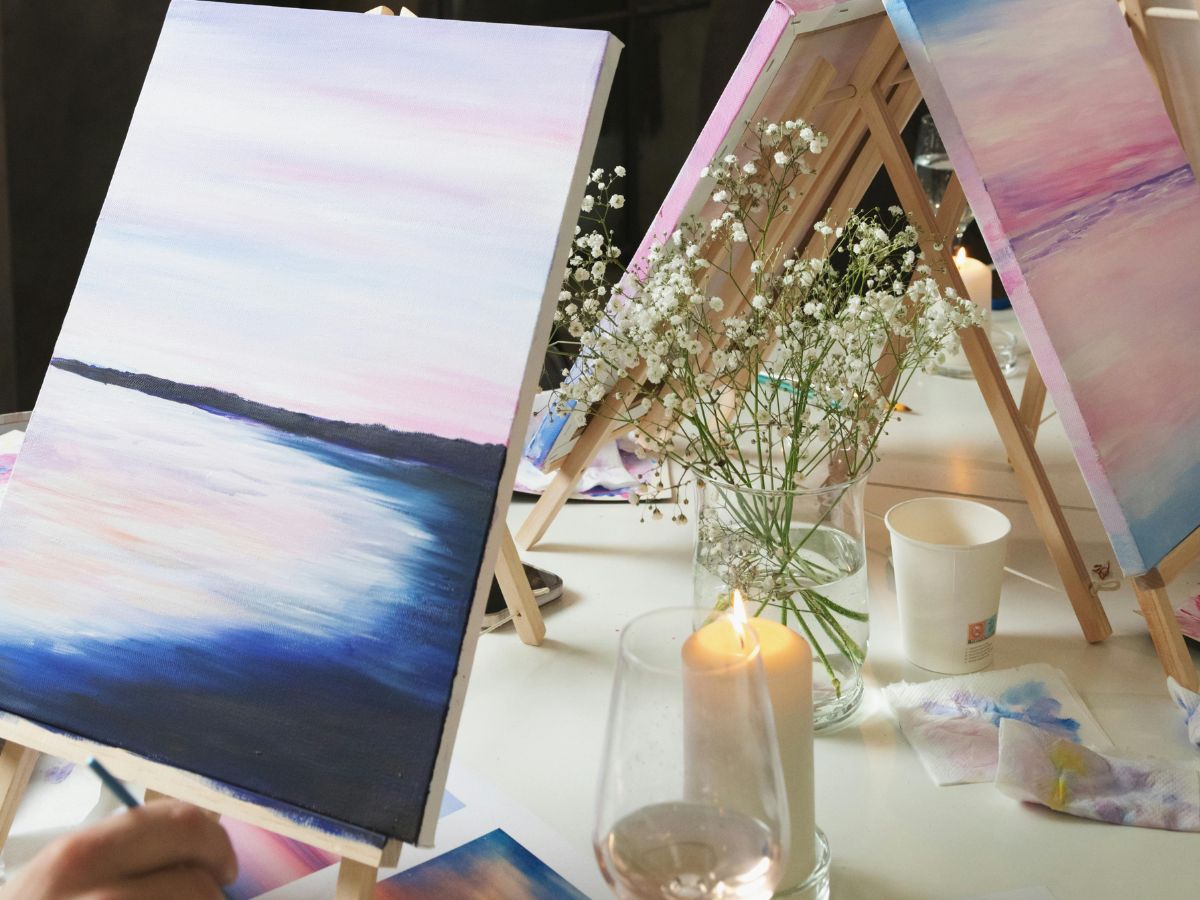
The 4 Stages of Painting: Step-by-Step for Artists
Every painting whether a quick sketch or a large, refined work, typically moves through stages. Knowing these stages helps you work more deliberately, spot what phase you’re in, and avoid getting stuck. Here’s a breakdown of four common stages of painting.
1. Planning & Design (or “Pre-stage”)
Before a brush ever touches the canvas, you’re already painting in your head. This stage includes:
- Sketching thumbnails or rough compositions
- Deciding the format, aspect ratio, cropping
- Choosing a ground (tone) or underpainting color
- Working out value structure, major shapes, and color mood
Paintings with strong outcomes often start with a solid design: layout, balance, focal points. Some artists do several small studies here before committing to the final canvas.
2. Block-In / Underpainting
Now you move from concept into form. In this stage:
- Transfer your sketch or design to the canvas
- Block in major values (darks, midtones, lights) broadly
- Establish main color zones, large shapes, and spatial relationships
- Keep edges loose, avoid detail
The block-in is about mapping the painting’s skeleton. It gives you a sense of whether your compositional choices are working before committing to detailed forms.
3. Development and Refinement
This is where the painting “comes alive.” In this stage you:
- Shape forms and refine edges
- Adjust values, color relationships, and local contrasts
- Add secondary details and texture
- Evaluate balance, push or pull certain areas
You’ll often work back and forth across the surface rather than finishing one section at a time. Step back frequently, rotate the painting, and make judgments about where energy is working (or not). As Judy Woods describes, this is when you ask “What do I like here? What needs cutting or enhancing?”
It’s also when you may start editing out what doesn’t serve the painting such as removing or toning down elements that distract.
4. Finishing and Touches
The final stage is subtle but critical. Here you:
- Add fine highlights, accents, glazes, or edge work
- Harmonize by softening transitions or enhancing focal contrast
- Balance color temperature or tweak saturation
- Clean up stray marks, sign your work
This is also the moment for “stepping away.” Allow yourself distance so that small decisions don’t override the coherence. Finishing involves “standing and looking and minute scrutiny” until everything supports the composition.
Why Knowing the Stages Helps
- Direction and clarity: You know where you are and what goal to aim at next.
- Avoid overworking: If you push detail too early (stage 2) you lose flexibility.
- Problem spotting: If something feels off, you can determine if it’s a design error, value issue, or finish imbalance.
- Pacing and patience: Some stages deserve more time; others benefit from restraint.

